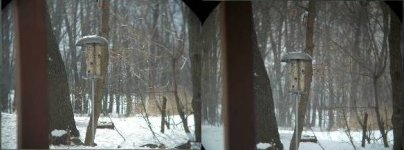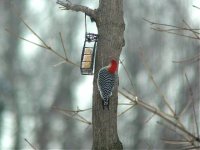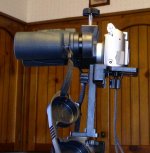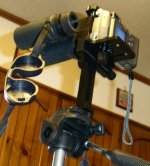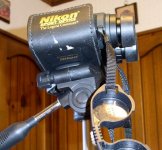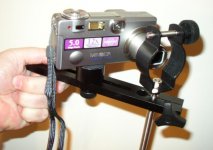Henry,
I will take your word for the measurement comparison. Without measuring, the two images seem almost identical in size to me on my monitor. However, as we discussed previously, the Meostar's image appears larger to me in direct comparison to the Razor's as per the method you suggested in the other thread. I still haven't quite figured that one out but I am guessing it does have to do with the pincushion distortion and/or the field curvature.
As I mentioned in earlier posts the Meostar's image has a decidedly warm color bias to my eyes. I believe this gives the impression of a brighter image with more contrast. To my eyes the Razor seems to give better contrast during full daylight conditions. They seem to flip roles though in low light conditions. The Meostar appears brighter with better contrast.
Edge performance is pretty much what you see on the pictures. I may have to take back my earlier comments on the Razor's superior edge performance. I believe what I was seeing was some form of greater depth of field effect created by field curvature. In other words though the depth of field is very good on the Razor I thought it was even better because the outside edge displaying the field curvature was actually in focus on closer objects.This gave the impression of a lower level of edge distortion in the particular condition I was originally evaluating the bin in.
Surveyor,
Thank you for the suggestions. My digital camera has some manual adjustments but not all. I cannot adjust the exposure setting directly but can indirectly adjust via changing the ISO setting. Everything was on full auto during the process which may account for some of the differences. I did prefocus each of the binoculars for my eyes prior to utilizing the auto focus on the camera. I did receive focus lock before taking each shot and utilized a 10 second delay timer to help reduce any vibrations during the shot.
I would look for an explanation for why the camera read a different environment for each binocular when the camera was set up the same way and the binoculars were in practically identical positions. I followed your suggestion and checked the camera for the settings during each shot. The Meopta picture had the following data:
ISO 50
F 5.6
1/200
The Razor picture had the following data:
ISO 50
F 2.8
1/400
The histogram for both shots appears practically identical with a reasonable bell shape curve with the peak just a hair to the left of center.
Tom,
If you haven't figured it out I decided to keep the Meostars. I find each attractive for its own reasons. As I tried to relate in the other thread I find the Meostars image a little brighter especially in low light conditions and with a lower level of edge distortion. The Razors image appears a tad darker but the colors seem more neutral to me and details jump out a bit more in regular daylight conditions. The field curvature is the only "issue" I would have with its overall image quality.
It is mighty cold here. Low for tonight is 8 F with a wind chill of close to -20 F...and throw 6-8 inches of ice and snow on the ground.

...and since I have a nice captive audience I also took a stab of digiscoping with the Pentax 65. My only issue was that, at the time, I only had the camera on VGA resolution. I would have loved to have seen it on the 5 or 10 megapixel setting.

Oh, and just to serve as a basis for further comparison I will attempt to digiscope a picture with my Leica 7x42 BN as well.




